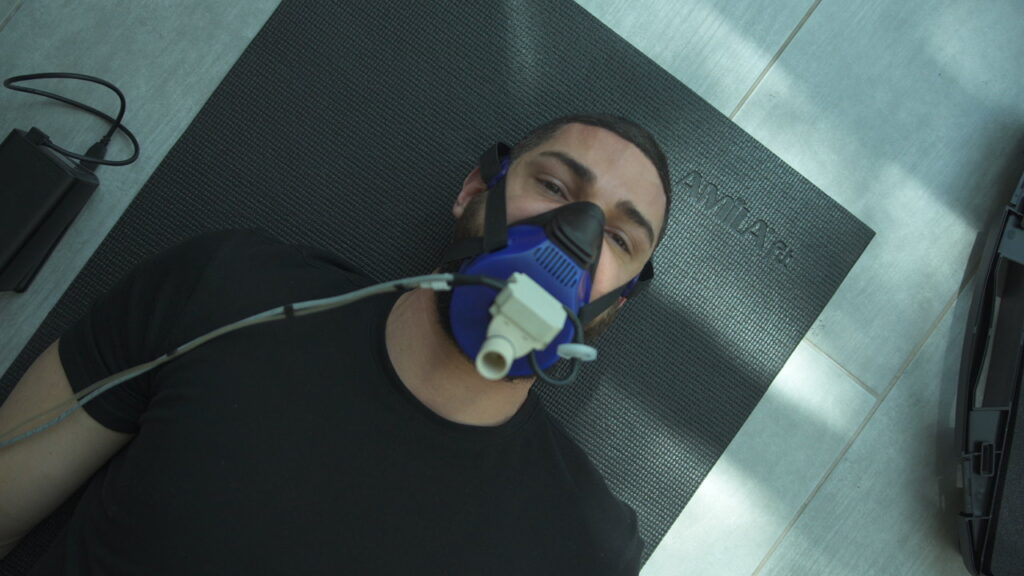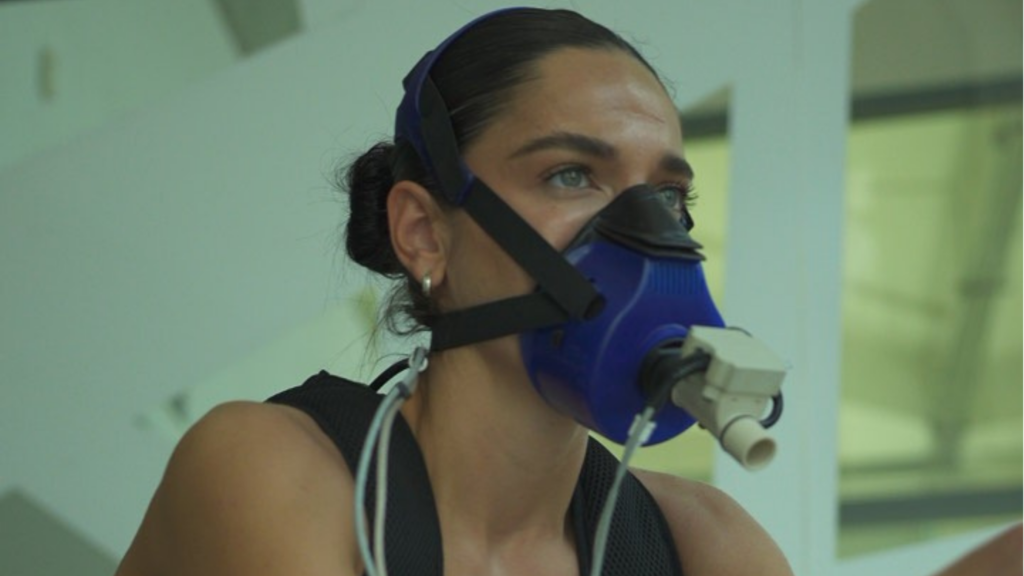This post explains the science of recovery, showing how structured rest days support VO₂ Max, fat burn, and metabolic efficiency.
If you’re grinding out workouts every day in pursuit of a higher VO₂ max or better endurance, you might be overlooking a secret weapon: rest. It may sound counterintuitive, but strategically doing nothing can sometimes be the best thing for your fitness. Aerobic capacity (your ability to sustain exercise, closely linked to VO₂ max) doesn’t just improve by pushing harder – it improves when you balance training stress with proper recovery. In fact, exercise is the stimulus for change, but the actual improvements happen during rest as your body adapts. This article dives into the science of why rest days are essential for boosting aerobic fitness. We’ll explore how recovery facilitates muscle repair, hormonal rebalance, and metabolic improvements that collectively raise your VO₂ max and endurance. By the end, you’ll see that rest days aren’t lazy days – they’re integral to becoming fitter, faster, and even biologically “younger.”
Recovery: The Overlooked Half of Fitness
Every workout you do is a form of stress on the body. During a hard run or intense cycling session, you’re actually breaking down muscle fibers, depleting energy stores, and triggering a cascade of physiological strain. The reason you get fitter is that your body responds to this strain by rebuilding a little bit stronger – a process known as adaptation or supercompensation. However, this adaptation only occurs with adequate recovery time. If you keep piling on stress without pause, your body can’t catch up to make those positive changes. Instead, you may start slipping backward (feeling fatigued or weaker). This is why coaches often say “fitness = training + recovery.” Both are equally important.
Consider aerobic capacity specifically: suppose you do a workout targeting VO₂ max, like repeated high-intensity intervals. You stimulate your heart, lungs, and muscles to work at their limit, which is great for triggering improvements in oxygen delivery and uptake. But if you attempt the same workout hard again the very next day, those systems are still in a state of breakdown and fatigue – you won’t hit the same output, and you risk overtraining. On the other hand, inserting a rest day or light active recovery day allows your body to replenish and rebuild, so the next time you train, you’re starting from a higher level. Rest is when your aerobic engine refuels and upgrades. Skipping rest days can lead to stagnation or even declines in performance (a phenomenon athletes call “burnout” or overtraining syndrome). In short, to improve your VO₂ max and endurance, you must respect recovery as a non-negotiable part of the process.
Muscle Repair and Growth During Rest
One of the primary ways rest days improve aerobic capacity is through muscular repair and adaptation. Endurance exercise creates microscopic tears in your muscle fibers – not only in your legs but also in the respiratory muscles and even the heart muscle to a degree. When you stop and rest, your body gets to work fixing this damage. Specialized cells called fibroblasts swoop in to repair muscle tissue, fusing fibers back together stronger than before. This means your muscles become more resilient and can handle a higher workload in the next training session, gradually allowing you to sustain higher intensities (a boost to aerobic capacity). Without sufficient rest, these microtears accumulate, leading to excessive soreness, weakness, or injury, which obviously detracts from consistent training.
Furthermore, rest days enable muscle adaptation beyond just healing tears. During recovery, your body increases mitochondrial production in muscle cells – especially if your training includes aerobic or VO₂ max efforts. Mitochondria are the “power plants” in cells that produce energy from oxygen and fuel. More mitochondria means you can generate more energy aerobically, effectively raising your endurance ceiling. Interestingly, different types of training trigger mitochondrial growth via different pathways (high-intensity vs. low-intensity stimulate different signals), but all of these gains manifest during rest periods, not while you’re exercising. If you never rest, you blunt the payoff of these cellular improvements. Additionally, on rest days your muscles restore their glycogen stores (carbohydrate energy). Hard cardio sessions deplete glycogen; given 24-48 hours with good nutrition, your muscles pack away extra fuel, which will let you go farther or harder next time. Topping off your energy reserves is critical for sustaining long aerobic workouts or tough interval days, thereby improving overall capacity. In summary, muscles don’t grow in the gym; they grow in recovery – and that growth directly translates to better aerobic performance.
Hormonal Reset and HRV: Your Engine’s Tune-Up
Rest days aren’t just about the muscles; they profoundly affect your nervous and endocrine (hormone) systems, which in turn impact aerobic fitness. Intense exercise puts your body in a sympathetic “fight or flight” state – stress hormones like cortisol and adrenaline spike to mobilize energy and keep you going. In moderation this is fine, but if you train hard daily, these hormones can remain chronically elevated. The result? Poor sleep, elevated resting heart rate, irritability, and eventually stagnating performance. Structured rest allows your hormones to return to baseline. Cortisol levels fall back to normal, and anabolic hormones (like growth hormone and testosterone, which aid tissue repair) do their work during deep sleep. This hormonal rebalancing is why you often feel a big bounce in energy and mood after an easy day or good night’s sleep – your body’s stress systems get a chance to chill out, which is essential for long-term progress.
Heart rate variability (HRV) is a useful indicator here. HRV measures the tiny fluctuations in time between heartbeats; higher HRV generally means your body is in a relaxed, recovered state with strong parasympathetic (rest-and-digest) activity. After heavy training, HRV usually drops (signaling stress). On rest days, HRV climbs back up as your autonomic nervous system finds balance. Coaches and sports scientists often track HRV to gauge if an athlete is recovered or on the verge of overtraining. For example, if your HRV is suppressed for multiple days, it’s a sign you haven’t fully recovered from prior workouts and might need additional rest. In one study, endurance athletes who underwent an intense training block saw significant decreases in HRV and even in their resting metabolic rate, indicating high fatigue; once a recovery period was introduced, both HRV and metabolism improved again. This shows how critical downtime is: it literally restores your internal “engine settings” so you can perform optimally. When you give yourself regular rest, you maintain a healthier hormonal profile and nervous system state, which supports better aerobic performance, consistency, and improvements over time.
Rest Days Boost Fat Burn and Metabolic Efficiency
Believe it or not, taking a break can also improve how your body uses energy – in other words, your metabolic efficiency. Endurance training famously enhances your ability to burn fat for fuel (shifting your metabolism to be more fat-adapted at certain intensities). However, those adaptations only solidify during recovery windows. If you constantly train without rest, your body may remain in a state of stress that favors quick-burning carbs and keeps fat-burning pathways suppressed. Incorporating rest days (and lighter aerobic sessions) encourages a shift back to parasympathetic dominance, which is associated with improved digestion, nutrient uptake, and fat metabolism. Essentially, when you’re well-rested, your body becomes more efficient at utilizing fat stores during exercise, which is a hallmark of high aerobic fitness.
Rest also helps prevent the negative metabolic effects of overtraining. As mentioned, chronic intense exercise without breaks can decrease your resting metabolic rate and prompt the body to conserve energy – the opposite of what you want for an active metabolism. By interspersing easier days, you keep your metabolism responsive. Over time, this means on hard workout days you’ll have a robust energy-burning capacity (since your body isn’t trying to throttle back), and on rest days you’re efficiently repairing and refueling rather than stagnating. Additionally, adequate recovery ensures you can train consistently, which is key to improving metabolic flexibility (the ability to switch between burning carbs and fats as needed). Think of it this way: a rested body can train harder and longer when it counts, and utilize fuel more cleanly, leading to better endurance. There’s even a longevity angle – consistently high VO₂ max and metabolic efficiency contribute to a younger “biological age”, whereas an overstressed body ages faster. Thus, by helping you sustain quality training and optimal metabolism, rest days play a direct role in elevating your VO₂ max and aerobic endurance over the long haul.
Balancing Training and Rest: Practical Tips
Understanding the importance of rest is one thing; implementing it properly is another. How many rest days do you need, and what should they look like? The answer varies per individual, but here are some general guidelines for balancing stress and recovery to maximize aerobic gains:
- At least one rest day per week: Most athletes and fitness enthusiasts benefit from 1–2 full rest days (no intense exercise at all) each week. If you’re training six days a week, consider scaling back to five with two lighter days if you notice fatigue. Remember, the goal of a rest day is to come back rejuvenated – if you feel guilty or anxious resting, remind yourself that it’s fueling progress, not hindering it.
- Active recovery: A rest day doesn’t have to mean couch potato all day. Gentle activities can actually promote recovery by increasing blood flow. Think easy walks, leisurely cycling, stretching, or yoga. These shouldn’t be strenuous – keep your heart rate low. Active recovery helps flush out waste products in muscles and delivers nutrients for repair.
- Listen to your body (and track metrics): Pay attention to signs of overreaching: persistent muscle soreness, unusual fatigue, poor sleep, elevated resting heart rate, or drops in performance. These are cues that you might need an extra rest day or a lighter week. Tools like HRV monitors or even simple mood/energy journals can provide insight. If your HRV is consistently down or you’re feeling burned out, take a break – your long-term VO₂ max will thank you.
- Quality sleep and nutrition: Make recovery count by optimizing your sleep environment and diet. Aim for 7+ hours of sleep, keep your bedroom cool and dark, and consider short naps if your training volume is high. Nutritionally, consume a mix of protein and carbs soon after hard workouts to speed up glycogen restoration and muscle repair. On rest days, focus on antioxidant-rich foods (fruits, veggies, omega-3s) to help reduce any lingering inflammation from training. Well-nourished recovery accelerates adaptation.
- Periodic deloads: In addition to weekly rest days, plan easier weeks every 3–6 weeks where you cut back on training volume or intensity. These “deload” weeks allow deeper recovery of both musculoskeletal and neuromuscular systems. Many athletes find their fitness jumps to a new level after a deload because the body finally absorbs all the gains from prior training. It’s a proactive way to avoid overtraining and keep progress steady.
By integrating these practices, you create a sustainable cycle of stress and recovery. Your aerobic fitness will build layer by layer, as each hard training block is cemented by adequate rest. Think of rest days as a tactical investment in your next performance: you are banking energy and resilience that you can cash in during your workouts. The result is a higher VO₂ max, better endurance, and less risk of injury or burnout.
Leverage Recovery Data with PNOĒ
In the era of smart training, we can even quantify and personalize our recovery needs. PNOĒ’s metabolic testing services provide detailed insights that help tailor your training and rest balance. For example, a PNOĒ test can reveal your exact resting metabolic rate and substrate usage (how much fat vs. carbs you burn at rest and various intensities). If your results show a slower-than-expected metabolic rate or poor fat-burning efficiency, it could be a sign of chronic stress or inadequate recovery – and an indication to incorporate more rest or nutritional support. PNOĒ also assesses your VO₂ max and can estimate your fitness-related biological age; improvements in these metrics over time are a good gauge that your training-rest strategy is working. With periodic re-testing, you can objectively see if your aerobic capacity is increasing and adjust your regimen if it plateaus (perhaps you need more recovery, or conversely, if you’re fully recovered you might safely increase training load).
In simple terms, PNOĒ gives you the data to answer: Am I recovering enough for my body to improve? Armed with this knowledge, you can fine-tune your routine. Maybe you discover your fat oxidation peaks at a fairly low heart rate – indicating you should do more easy aerobic sessions and not overdo high intensity, with ample rest to build your base. Or maybe your test shows a dip in VO₂ max compared to last season, hinting that you’ve been overtraining and need a rest block. This kind of insight is invaluable for balancing stress and recovery optimally. Instead of guessing, you have concrete biomarkers guiding you.
In summary, rest days are a powerful tool for improving aerobic capacity – and when combined with personalized data from PNOĒ, they become even more effective. So next time you’re tempted to skip a rest day, remember that recovery is not the enemy of progress but its catalyst. Train hard, yes, but also recover hard. Your body will reward you with stronger performances, a higher VO₂ max, and a more efficient metabolism. Achieve more by sometimes doing less, and consider letting PNOĒ’s science-based analysis guide you on when to hit it hard and when to back off.
Internal Call to Action: Interested in optimizing your own training and recovery balance? Explore PNOĒ’s metabolic testing at pnoe.com to get personalized insights into your aerobic fitness, metabolic rate, and biological age. With PNOĒ’s guidance, you can craft a workout and rest schedule that propels you toward peak performance while safeguarding your health. Remember: the journey to better fitness isn’t just about how much you train – it’s about how smart you train and recover. Take a step today to train smarter with the help of PNOĒ’s cutting-edge metabolic analysis.




